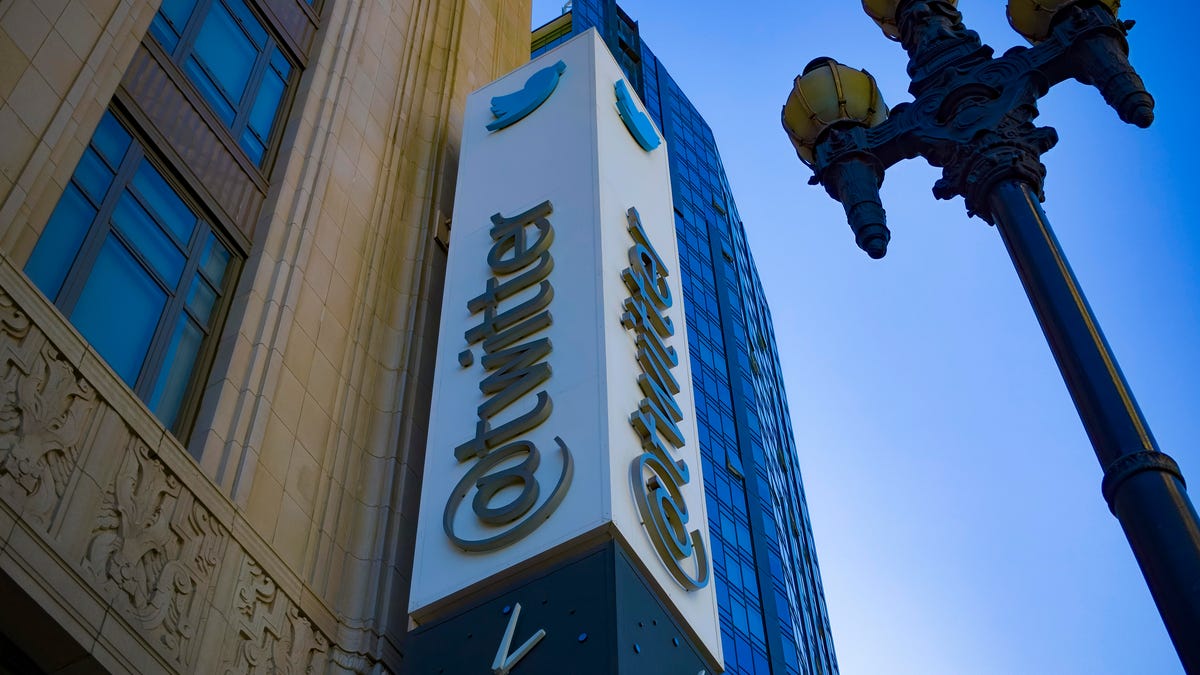Twitter earnings show that advertisers like a less toxic social network
CEO Jack Dorsey is making good on his promises to fix harassment, bullying and misuse.

Twitter is trying to make its network "healthier and more conversational," CEO Jack Dorsey says.
Twitter can be filled with harassment, bullying, misinformation and hate speech -- not exactly a warm and fuzzy place for people or companies hoping to spread their messages.
On Thursday, Twitter showed it's making strides against toxic users. The company reported that the number of monthly active users fell slightly to 321 million in the fourth quarter from 326 million in the third quarter, attributing the lower numbers to its effort to purge fake accounts, trolls and bullies from its network.
"Our efforts to improve health have delivered important results," Jack Dorsey , Twitter's CEO, said in a statement. "We enter this year confident that we will continue to deliver strong performance by focusing on making Twitter a healthier and more conversational service."
The company warned investors in October that it expected to see another dip in users in the fourth quarter, partly because of its crackdown on fake accounts. That effort is critical to Twitter, which needs to show advertisers it can attract new people to the platform while competing against tech giants like Facebook and Google for ad dollars.
Twitter also provided, for the first time, the number of daily users of its service. That came in at 126 million for the fourth quarter, compared with 124 million for the third and with 115 million for the same period a year earlier.The company also cautioned that its daily average numbers aren't directly comparable to those from other companies -- Twitter's are "monetizable," meaning ads get shown, while other companies' numbers include people who don't see ads.
It's the start of a notable change in how to gauge Twitter's appeal. Daily users will be the company's engagement metric going forward, with the statistic for monthly users being discontinued after the current quarter, Chief Financial Officer Ned Segal said Thursday on a conference call with analysts.
Revenue grew 24 percent to $909 million in the fourth quarter from $731 million a year earlier, driven in large part by advertising, which accounts for nearly 90 percent of that money. Analysts surveyed by Thomson Reuters had estimated $868 million in revenue. Excluding certain expenses such as employee stock compensation, Twitter earned 33 cents per share, above the average estimate of 25 cents per share.
"This was the best financial performance ever" for both the quarter and the year, Dorsey said on the analyst call.
Over the past year, Dorsey has expanded the site's rules for identifying fake accounts, looking for warning signs such as stock or stolen profile photos and misleading profile information. It's been experimenting with ways to make it easier to start positive conversations such as tweets that prompt users to answer questions about themselves. And in November, Twitter suspended a fake account with more than a million followers for impersonating Russian President Vladimir Putin.
But Twitter has also come under fire for not doing enough to curb on online abuse. It's apologized for failing to respond to a threat a user received from Cesar Sayoc, the Florida man accused of sending pipe bombs in October to prominent Democrats and critics of President Donald Trump. A study released by Amnesty International and software maker Element AI in December showed that Twitter can be a toxic place for female journalists and politicians.
For the current quarter, which ends in March, Twitter said it expects total revenue of $715 million to $775 million. That apparently wasn't to Wall Street's liking -- analysts' estimates had been set at an average of $762 million.
In early trading Thursday morning, Twitter's shares were down around 10 percent to about $30.75.
Cleanup efforts
When Dorsey testified before Congress in September, he pledged to improve the "health" of the platform. Like Facebook, Twitter found evidence that Russian trolls and other state actors use the platform to spread fake news and influence public opinions ahead of elections throughout the world.
Last week, Twitter said that since August it had suspended 2,617 malicious accounts tied to Iran. The social network pulled down accounts tied to Bangladesh, Russia and Venezuela as well.
The social network has been using its own Twitter account to showcase the "lighter, more conversational nature" of the platform, although not everyone is a fan.
Dorsey said Thursday that the company has four main areas of focus: encouraging healthy conversations; making the service more conversational; offering a clear, strong appeal to advertisers; and developing the platform's technology, including an increased reliance on machine learning and deep learning.
"A big focus for us is to remove the burden from victims of harassment," he said.
Meanwhile, the company has been testing new features meant to encourage more positive interactions. That's included conversation starters that ask users to answer questions about the inspiring people in their life or about TV shows. Twitter has also been experimenting with more subtle changes, including status indicators so users can see if someone is active online.
On the conference call, Dorsey singled out the company's addition, in December, of a timeline switch at the top of users' feeds, which allows them to toggle between the most recent tweets and what Twitter presents as the most relevant.
"It was a huge and risky move for us," he said, but "every metric we care about went up."
First published at Feb. 7 at 4:14 a.m. PT.
Update at 5:56 a.m. PT: Adds information from Twitter's conference call with analysts.
Update at 7:56 a.m. PT: Adds Twitter's stock movement in early trading.
CES 2019: See all of CNET's coverage of the year's biggest tech show.
Everything about Fortnite: What you need to know about the hit game.



